
The basic elements of brainstorming, researching, outlining, and composing a research essay.
- Subject:
- Arts and Humanities
- Business and Communication
- Material Type:
- Textbook
- Date Added:
- 04/28/2017

The basic elements of brainstorming, researching, outlining, and composing a research essay.
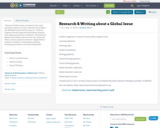
* Research & Write about a problem in the world, including solutions or ways to alleviate the problem
* Use Multiple Sources for the research
* Collect & Organize relevant important information using the note-taking and question worksheets
* Summarize & Explain the problems and concerns,
the causes and effects, and any proposed solutions
* Apply Skills of analysis, evaluation, summarizing, synthesis, reasoning, persuasion, and other writing skills

In many English classes, conflicts appear in fiction: short stories, novels, and plays. But conflicts--both internal and external--also play a part in our daily lives and become part of our narratives. In fact, a personal narrative (an essay about a personal experience) revolves around a central conflict. Often, the conflict is caused by internal or external forces, and the narrator reveals how the problem was resolved. In this seminar, you will learn more about internal and external conflicts and how both contribute to our human experience. In the process, you will continue to analyze the perspectives of the people involved in the conflict, striving to accurately portray their roles in your narrative.Standards CC.1.4.9-10.MWrite narratives to develop real or imagined experiences or events.CC.1.4.9-10.NEngage and orient the reader by setting out a problem, situation, or observation, establishing one or multiple points of view, and introducing a narrator and/or characters.CC.1.4.9-10.PCreate a smooth progression of experiences or events using a variety of techniques to sequence events so that they build on one another to create a coherent whole; provide a conclusion that follows from and reflects on what is experienced, observed, or resolved over the course of the narrative.
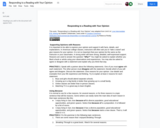
In this class activity, students learn about how to respond to a reading by writing an opinion.
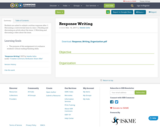
Students are asked to submit a written response after:
1. Discussing a controversial issue in class.
2. Reading and discussing an article about the issue.
3. Watching and discussing a video about the issue.
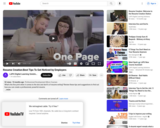
What's the fine print when it comes to the do's and don't's of resume writing? Review these tips and suggestions to find out how you can create a professional, powerful resume.
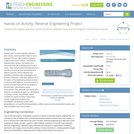
Student pairs reverse engineer objects of their choice, learning what it takes to be an engineer. Groups each make a proposal, create a team work contract, use tools to disassemble a device, and sketch and document their full understanding of how it works. They compile what they learned into a manual and write-up that summarizes the object's purpose, bill of materials and operation procedure with orthographic and isometric sketches. Then they apply some of the steps of the engineering design process to come up with ideas for how the product or device could be improved for the benefit of the end user, manufacturer and/or environment. They describe and sketch their ideas for re-imagined designs (no prototyping or testing is done). To conclude, teams compile full reports and then recap their reverse engineering projects and investigation discoveries in brief class presentations. A PowerPoint(TM) presentation, written report and oral presentation rubrics, and peer evaluation form are provided.
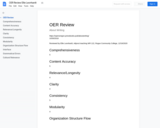
Review of About Writing: https://drive.google.com/open?id=1hICOC6hEXDpXdkLh2x1GAXfUaOIGi2lTST2ByEGJIgI
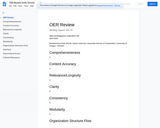
Review of Writing Space Vol. III
https://drive.google.com/open?id=1Uf4I2nAC5UUtabeTmu4_DdHiO5EhJuJ2N34X-D1_sQg
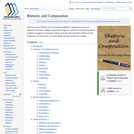
Designed for use as a textbook in first-year college composition programs, written as a practical guide for students struggling to bring their writing up to the level expected of them by their professors and instructors.
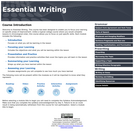
This course has been designed to enable you to focus your learning on specific areas of improvement. Unlike a typical college course where you would complete lessons in chronological order, this course allows you to focus on just specific skills. Modules include: Grammer, Pre Writing, and Writing
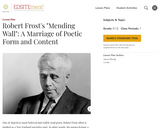
Studying Robert Frost's "Mending Wall," students explore the intricate relationship between a poem's form and its content.
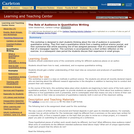
This workshop entails the reading of a highly quantitative article, summarizing it for a different audience, and reflecting upon what choices and opportunities audience presents for quantitative writers.

Reflection is metacognitive process that creates a greater understanding of ourselves and the situation we are in to inform future actions by this understanding. There is increasing literature on educational approaches for those in undergraduate or postgraduate studies and those continuing medical education to facilitate reflection. This resource adds to the reflective journal exercise presented previously, by providing a description of reflection, its use and reflection frameworks as well as the way it impacts positively learning outcomes in various educational settings including medical education. Lastly, an example of a reflection exercise for medical education is also added.
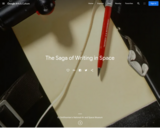
In space, where the stakes are high, how does one write? After all, the ink in pens isn't held down by gravity, so how do you write upside down?
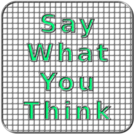
Language study can be divided into four parts: reading, speaking, listening, and writing. Where reasonable, we try to make use of and develop all four of these skills. Through practice, students can become well rounded and increasingly proficient at expressing themselves in English and more generally in their lives. In this book, we focus on critical thinking and clean writing.The last four chapters are a short introduction to philosophy, and they can be a significant leap in difficulty compared with prior chapters.
This book is designed as an English for Academic Purposes class for ESL high school students living in Japan, with a focus on critical thinking and writing. However, there's nothing specific about Japan in the book, and it could be used in other countries just as easily.
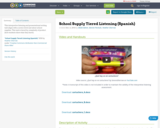
This interpretive listening and presentational writing task aligns with a novice-level unit about school supplies. This task is tiered by complexity of product (how students show what they know).

This video was created to introduce middle school students to science fiction as a genre. It was intended for educational and instructional purposes only.
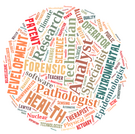
The students will explore, research, and become more knowledgeable in various careers in science. Students will apply this knowledge by creating a lab, hands-on activity, visual, or video. Opportunity for student choice is provided and creativity to apply their understanding is given.
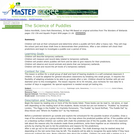
This activity is a field investigation of puddles where students gather data and record their findings.